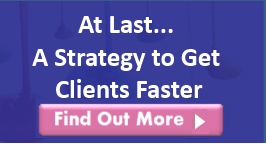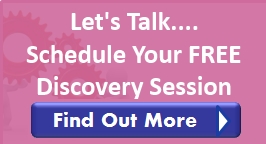
by Francis | Marketing Tips
 Are these marketing mistakes perhaps the reason why you are frustrated with your business results?
Are these marketing mistakes perhaps the reason why you are frustrated with your business results?
For many, a self-owned business is a life-long dream: an opportunity to do what you are passionate about and to get handsomely rewarded for it. Yet, at some point in time reality can set in when you realise that just being good and passionate about what you do is not nearly enough to have a profitable business.
In fact, to be handsomely rewarded for what you do, you need clients who buy your services and products and to get clients you have to do a lot of marketing.
This is normally where the spanner meets the wheel and topples the apple cart, since many solo-preneurs are excellent in the services they provide, but they haven’t mastered the marketing aspects of their business yet and then they make one or more of the following deadly marketing mistakes.
MARKETING MISTAKE #1: Marketing your services to the world.
The deadliest mistake for your business is to try and market your services to the world. In other words, this happens when you don’t have clarity on who your ideal client audience really is and you try to fit anyone and everyone with a pulse into you marketing efforts.
Marketing to the world often originates from thinking that you’ll limit your income possibilities if you narrow your target market. Another reason why people might not want to choose a target audience is when they deliver services that are quite universal and many people (across a wide spectrum) can benefit from it.
For example: Let’s say you are a health coach and anybody from a middle-school student to the CEO of a fortune 500 company and beyond can find your health coaching services beneficial – so you try to market to the whole spectrum of clients and are not selective with whom you work with.
In reality however, the quickest way to go broke and fail in business is to think that everybody is a potential client – even if they can or should use your services.
The problem however is that there is no way that you can successfully market your business to everybody on the planet because you simply just don’t have the financial budget to do it. People also have different buying reasons and if your marketing message is so diluted because you want to fit everyone on the planet into it, they simply won’t understand how you can help them specifically – and they won’t buy.
So, the first step to successful marketing is to correct this mistake. Narrow your focus and choose a smaller target audience – people you can relate to easily and who you can help best with what you offer.
MARKETING MISTAKE #2: Spending too much time, money and effort to market your services to people who will never buy from you.
This mistake closely follows in the footsteps of #1 and often happens when you are looking for your target audience in all the wrong places. This means that you spend time with people who are not interested in buying your services or products or you spend your time and money on strategies where you won’t find your ideal client in large numbers.
For example, let’s say you work with executives of Fortune 500 companies, then spending all your time and efforts on marketing to your local Chamber of Commerce might not be the best strategy at all and spending a lot of time on social media marketing might not put your business in front of your target audience either. A better strategy might be a direct mailing campaign or to be a guest speaker at a conference these executives attend.
The bottom line – for marketing to be effective, it need to reach your target audience – preferably where they are present in large numbers.
Remember the saying “birds of a feather flock together”? So, choose a target audience; get to know them really well and take note where they hang out. Then put your marketing time and money into those places where it will have the biggest positive impact.
MARKETING MISTAKE #3: NOT having a clear marketing message.
OK, you’ve narrowed down your target audience and you are present where they hang out, but you still do not get the results you want. This is where mistake #3 comes into play in that you might not have a clear enough marketing message.
In today’s information rich world, people have a lot of choices how to spend their money and thus need a compelling reason to spend it with you. If they can’t see how your services can solve their most difficult problems, saves them time or money or provide ways for them to achieve their most important goals, they just don’t buy.
For example if you provide professional proofreading and editing services to university graduates, telling them about your experience, where you’ve studied and what qualification you have, might not be the best marketing message to get them as clients. But telling them how your services will help them get better grades with a professionally edited thesis can be much more effective as a marketing message because it addresses an important goal they want to achieve.
To develop a clear marketing message that stands out above all the clutter and competition, it is necessary to know and understand what your ideal target audience really struggle with and / or what they want to achieve. That knowledge will help you prepare a message that addresses their needs in such a way that they see you as someone who can solve their problems or help them get what they want.
MARKETING MISTAKE #4: Doing occasional marketing.
It is sad to say, but people sometimes only do marketing when the appointment book looks a bit empty. When it is going well, they don’t make time for marketing and before they know it, they run out of clients and have to start all over again.
Another side of occasional marketing is when people think that clients will come automatically if they’ve set up a website, hand out one or two business cards, distributed a flyer or two or attend a networking event once in a while. People often wait for clients to come knocking on their doors and when work is not pouring in, they get discouraged and even start to doubt their own abilities.
The truth is, it doesn’t matter how good you are in what you do or how truly unique your services and products are. You still need to tell people about it – consistently and continuously.
Occasional marketing does NOTHING for your business. It only creates frustration when your business is on a financial see-saw.
To reap the best marketing results, you need to do some marketing activities daily, consistently and get in front of your target audience on a continuous basis. You never know how long it will take for someone to work with you. One client might make a decision after the first meeting, but the majority of people won’t. So it is your responsibility to continuously market your business to remind them about your existence so that they won’t forget about you.
Your action step today is to recognize if you make one or more of these marketing mistakes and then take the necessary action to correct them. It can make a world of difference to your business results.

by Francis | Online Marketing
 There’s no two ways about it, in today’s on-line world, any small business needs a website – even if you are a solo-preneur, doing your thing from home.
There’s no two ways about it, in today’s on-line world, any small business needs a website – even if you are a solo-preneur, doing your thing from home.
Running a business without a client attractive website is like missing out on a goldmine of potential clients. Not only is a website beneficial as an online showcase for your business and services, but it also gives you the ability to:
- Level the playing field;
- Use cost effective marketing strategies;
- Expand your business across geographical borders;
- Reach a global client audience;
- Get 24/7 marketing coverage 365 days a year;
- Attract new leads and getting more clients;
- Add value;
- Give clients easy access to you;
- Improve your credibility;
- Keep in touch with prospects and clients;
- Diversify your income streams.
OK, so you hopefully agree with me that there are a lot of great benefits for a solo-preneur to have a web site.
So, here are the 7 steps to build a website from scratch
Step1: Determine the Purpose of Your Website?
As with everything else in business it’s important to know what the purpose of your website is, to both you and your clients. For example, your purpose might be to get leads and sell your services, while it is to your client to get some information. Knowledge about your site’s purpose helps you to structure the site and content to deliver on both approaches.
Step 2: Know Who You Write For?
Knowing who you are writing for, gives you insight in what content to write. You can have the best looking website; however, without an identified target market the information on your site might be too general and not live up to its purpose.
By knowing your market and understanding their needs, you can guide visitors with your content to gain an interest in learning more about you and what you have to offer.
Step 3: Decide on a Domain Name
Before you can publish a website on the internet, you need a domain name. You’ve probably already decided on a name for your business and it can be used “as is” for your domain. Just ensure that it is available.
Remember, getting a domain name does not get you a website – it’s just a name. It’s basically the same as registering a business name in the brick-and-mortar world; having that business name does not mean that you also have the shop premises to go with the name.
Tip: Most hosting companies include the price for a domain name in their hosting packages. When you sign up for a hosting account (step 5 below), they will register your domain automatically. This is the easier route to go than trying to do it yourself.
Step 4: Decide to Do It Yourself or Outsource
You basically have 2 options: Either build a website yourself (benefit: cost effective) or hire someone to do it (benefit: saves time).
When you outsource your website to a web designer, they will take care and assist you with all the technical issues. You then only focus on writing the content based on your site’s purpose and your clients in mind.
If you want to do it yourself, you need the following:
- A hosting account
- Content management system e.g. WordPress
Step 5: Choose a Hosting Company
Webhosting allows individuals and organizations to make their website accessible via the world wide web. If getting a domain name is analogous to getting a business name in the brick-and-mortar world, getting a web hosting account is analogous to renting office premises for your business.
There are many hosting companies with different price structures that can suite any budget. I use Bluehost as they have excellent customer care and you can host multiple domains on one account.
What about Free Hosting? Although it might be tempting to opt for free hosting, it might not be the best option. Free hosting sites are often frowned upon especially when you want to gain a professional reputation and want a unique domain name. With free hosting, this is the very first thing you won’t have as your domain is just a subdomain /extension of the hosting website (e.g. www.freehostingaccount/yourdomain.com vs www.yourdomain.com on paid hosting).
Step 6: Use WordPress as your Content Management System
I’m a big fan of WordPress since it can be used as a combination of a content management system (traditional website with static pages) as well as a blogging platform for keeping your content fresh and updated.
WordPress is extremely easy to use and very user friendly. It furthermore has a wide variety of design themes (both free and paid) for changing and customising the look and feel of your site so that your site is unique and live up to its purpose (step1).
WordPress can be installed for free from the control panel of your hosting account.
Step 7: Populate your Site with Client Attractive Content
All eye catching websites have one thing in common. They know their target market and leverage that knowledge to write content that capture their visitor’s attention.
Some things to keep in mind:
- The outline of the site will be dependent on the purpose you want to achieve.
- Most visitors do not read everything. So, make your content easy to follow by using headings, bullet points and shorter paragraphs.
- Have dedicated pages with your contact details and services.
- Have a call to action on every page.
- Have an opt-in box to capture the contact details of your site visitors.
- Keep your navigation simple.
- Keep the design clean and simple as it is often much more user attractive and faster to load.
A website is an important part of your business and one of your best marketing tools. What are your goals for getting your website ball rolling. Share it with us in the comment box below.

by Francis | Marketing Tips |
 Effective marketing for solo-preneurs involves a good mix of both on-line and off-line strategies. Although online marketing can help boost your business and catapult it to new heights, there are still many people who don’t use the internet to its full capacity and can only be reached off-line.Thus, by combining on-line strategies with creative off-line marketing strategies, you are closing all the marketing gaps and it help you tap into a potentially large target audience that may never know about your presence online.
Effective marketing for solo-preneurs involves a good mix of both on-line and off-line strategies. Although online marketing can help boost your business and catapult it to new heights, there are still many people who don’t use the internet to its full capacity and can only be reached off-line.Thus, by combining on-line strategies with creative off-line marketing strategies, you are closing all the marketing gaps and it help you tap into a potentially large target audience that may never know about your presence online.
5 Creative & Cost-effective Offline Marketing Strategies
#1. Use The Media.
Believe it or not, your local media are probably just waiting for you to call them with a great story idea! Newspapers, radio stations and magazines are always looking for stories to fill up their pages or broadcasting time.
Take advantage of it – it’s free!
Contact typical publications that your target market reads. Provide them with a newsworthy story or ask them to write a profile on your business. Talk about your services and especially what gaps you fill with regards to what your target market needs. Make it interesting and full of benefits to the readers to give them reasons to visit your website or to contact you.
#2. Start Networking
Joint the Chamber of Commerce and other networking organizations for small businesses. Attend events and meetings near you where you can find your target audience. Attend conventions, shows or exhibitions, or even just an organised social event.
By networking and joining groups, you get to know more people, have the ability to share ideas and knowledge, raise the visibility of your expertise and business and create opportunities for getting new clients. As you build your network of friends and acquaintances always think about what YOU can contribute and how you can make the life better for others. In successful networking you first need to be a giver before you can be a receiver.
#3) Send “Snail-mail”
Traditional mail could be considered a little old fashioned these days because sending an email is so simple, cost effective and measurable. The old way of doing it – writing a letter by hand, stuffing it in an envelope, buying a stamp and posting the letter at the post-office – seems distinctly primitive.
But the beauty is: it catches the eye and can talk to those who didn’t even know they were looking for your business!
Use snail mail to send prospects an introduction letter about your business, a thank-you note or a birthday card. The key is to start getting creative and to use snail-mail to rise above the clutter.
#4) Put your web address everywhere
Got a car? Stick your website address on the back. Print it the t-shirt you wear to the gym or the one you use for your morning jog. Print it on some promotional items link pens, notepads, keyrings, beer mats – anything you can think off.
The internet has greatly removed the need for you to print fancy advertisements or logos. Now all you need is to help people remember what to type into Google.
#5) Speak to people face-to-face
Many years back, face-to-face marketing was THE trend for promoting business. If you wanted to be successful, you had to go out and meet people to introduce your business.
With the onset of the internet it rapidly changed and business owners began to rely on email, telemarketing, and internet promotions to attract new clients – no more going out and speaking to people.
But when you just start out, face-to-face marketing is still the most efficient way of promoting your business and generating new leads. Imagine how impressive you’ll appear if you actually visit your prospects and take the time to talk to them and discuss their needs. You will definitely stand out. A little effort and time on your part can make a difference and send a strong message that you care enough to meet and talk with your clients and prospects.
When planning your marketing activities, the ultimate goal is to have all your marketing efforts supporting each other so you can close all gaps.
Assess your current situation, take stock of your marketing resources and consider some ways where offline marketing can help your business.
Share with us below what off-line marketing techniques you already apply / intent to implement in your business.

by Francis | Attracting Clients |
 One of the biggest marketing instructions you’ll ever hear is:
One of the biggest marketing instructions you’ll ever hear is:
Define Your Unique Selling Proposition
In other words: find those things that help you stand out from the crowd and make clients take notice.
However, when you’re a VA, coach, consultant or solo-services professional it can sometimes be difficult to figure out how you are “unique” compared to all those other people offering the same services as you. Then defining your USP becomes relatively difficult.
To overcome this dilemma of finding your unique selling proposition, the answer lies in defining your unique story.
Stories are used everywhere – in films and books and even in social context when we enjoy telling a story or listening to someone else’s story. In reality, millions of these stories use the same story framework – e.g. the hero’s journey through hardship and pain and eventually overcoming his struggles to start living his dream. Yet all those stories are also different, due to different characters, situations and geographical locations.
Did you know you also have a unique story? Your experiences in life, your background and knowledge, your talents and skills, the different places you’ve been to, absolutely everything in your life contribute to your unique story. Your story also makes you different from any other person, because no-one else has experienced everything in exactly the same way you did.
This is one of the secrets to stand out from the crowd and make clients take notice. You can use your unique life experiences and your own journey to engage and connect with your ideal clients.
So, find your Unique Selling Proposition, by formulating your Unique Story Proposition.
There’s however a catch with formulating your Unique Story Proposition. You cannot do it in isolation. When you want your story to engage clients, it should be a story that they want to listen to and can easily relate to.
When you start writing your story, think about what your clients are interested in. In other words, what do they want and need and what solutions are they actively searching for. Then think about the solutions you provide to their problems and how you arrived to those solutions. That becomes your story.
The truth is: your clients love to hear your story and telling them about your journey – how you got where you are today – is a great way to engage them. When you share your story on your website and in your marketing materials it not only connects with your ideal prospects on a personal level but also increases your credibility and helps building the know, like and trust factor.
So, what’s your story?
Share it with us in the comment box below.

by Francis | Uncategorized
 If you don’t like to sell your services, there is some good news! Your testimonials can do the selling for you. That’s because testimonials are considered as excellent social proof – i.e. if someone else is saying how good you are, then it must be true.
If you don’t like to sell your services, there is some good news! Your testimonials can do the selling for you. That’s because testimonials are considered as excellent social proof – i.e. if someone else is saying how good you are, then it must be true.
This type of social proof reassures prospects that you deliver on what you promise in your marketing materials and conversations. It instills trust and adds to your credibility which ultimately makes it easier for potential clients to start working with you.
But how do you get those awesome testimonials that sell?
Here are my tips.
#1 Make It a Routine to Ask For Testimonials
Most of the time when you don’t have enough testimonials is because you don’t ask for them! There is nothing wrong to ask a client to give you feedback on the work you’ve done together. They will be more than happy to do so.
The best time to ask is when clients are full of praise for you; you’ve just completed a project or program with a client or just right after an event when they are full of enthusiasm and excitement. You can have a formal “testimonial/feedback” form ready to send to clients or you can ask them to give feedback while you are on the phone.
The important thing is just to ask. Then depending on your work together and the time they need to get results, you can schedule a reminder to follow up with them on their progress and ask them to compare their situation before to where they are now. When you can compare the before and after on paper it reinforces the results and successes they received from working with you.
#2 Make Your Testimonials Results Orientated
For a testimonial to do the selling for you, it needs to say more than “You Rock!”. It needs to say why you rock. Just think about TV infomercials and how impressive it is when you see the before and after photo of someone who says they dropped 20 pounds in just 5 weeks! Well, you can do the same with your testimonials when you show your clients’ before and after stories.
So when you ask for a testimonial encourage clients to share what their situation was before they worked with you and what it is now in terms of e.g. increased revenue, more clients, more confidence, more time, better health, more happiness etc. If they can state it in measurable results so much better, e.g “As a result of ABC, I doubled my income over the last 2 months”.
#3 Make It Easy For Clients to Give a Powerful Testimonial
Clients want to give testimonials and praise you for what you’ve done for them, but often they don’t really know exactly what to say. Then they provide a really “nice” testimonial on how great YOU are, but forget to state what you’ve done for THEM. And although it can boost your self-confidence to get these “nice” testimonials, they are not the ones that get the sales. You want a powerful testimonial that outlines the results a client received from working with you.
To ensure you get what you want and in the process also makes it easier for clients to formulate their testimonial, ask them to answer a series of specific questions so you are able to extract the results of working together from their answers. Answering a few questions is much easier for clients than writing a testimonial. Afterwards, you can edit their answers into a formal testimonial and give it to them for approval.
Then showcase your testimonials on your website for potential clients to see and to be inspired about what you can do for them too!
___
In the comments below, let me know if you are currently using testimonials in your business and what you’re going to do this week to create some client chemistry with this piece of your marketing!

 Are these marketing mistakes perhaps the reason why you are frustrated with your business results?
Are these marketing mistakes perhaps the reason why you are frustrated with your business results?







